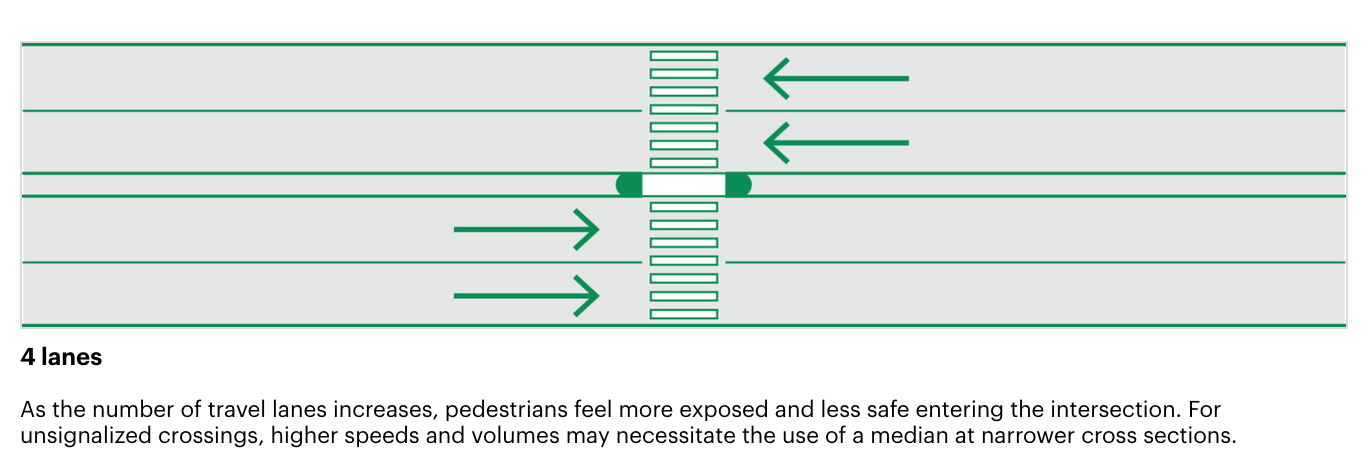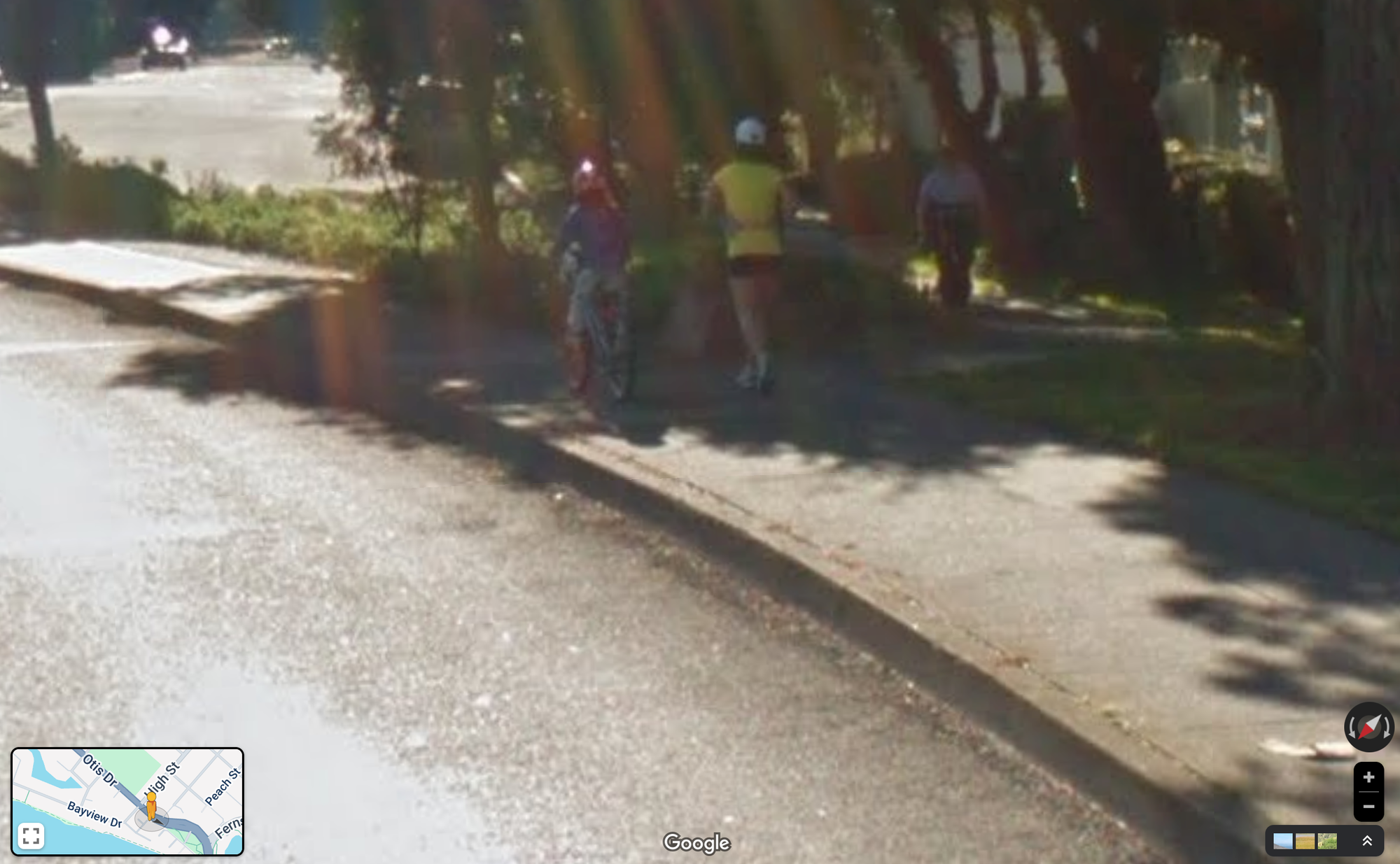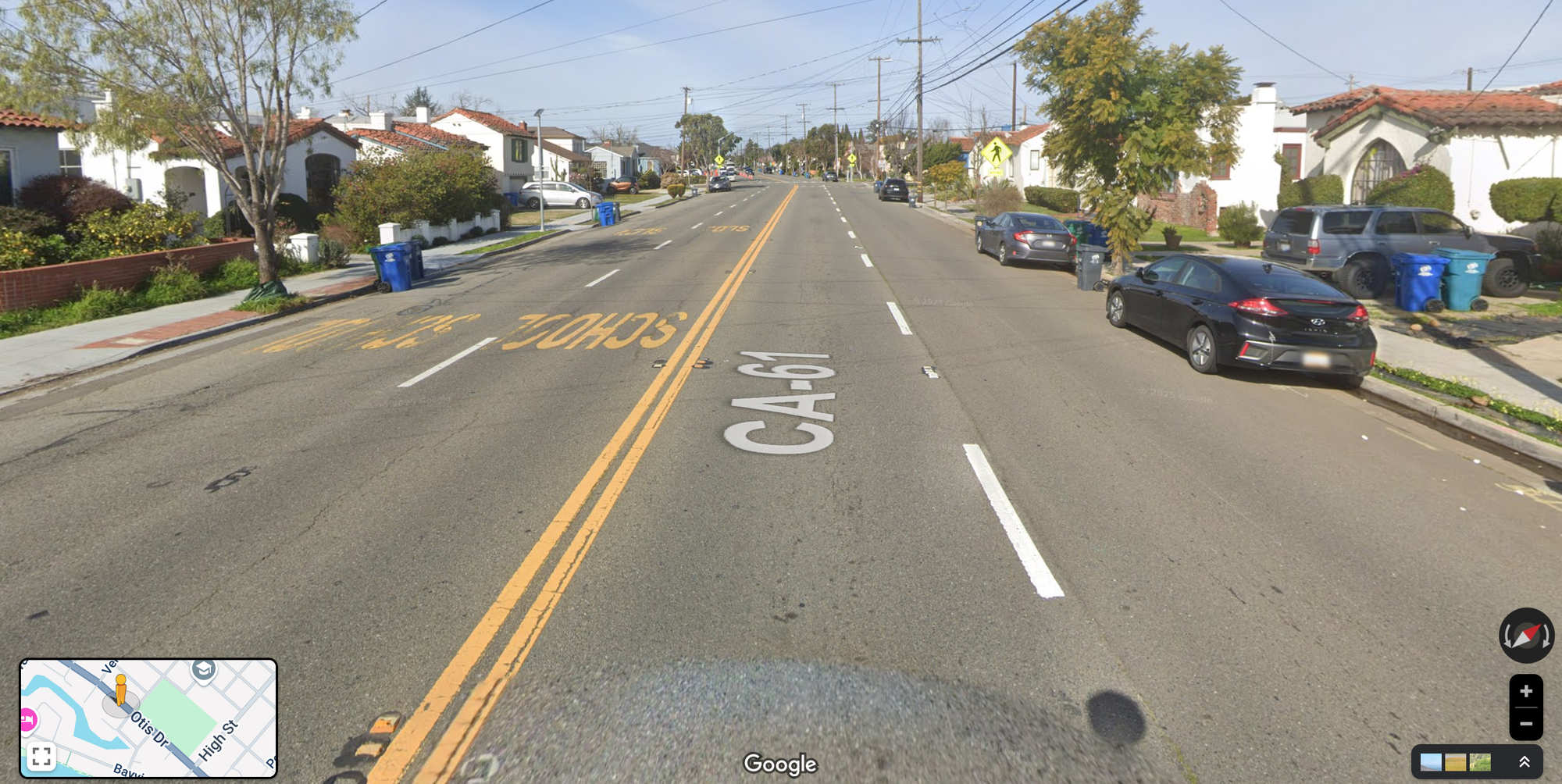Caltrans District 4 is now scheduled to return to the Alameda city Transportation Commission next Wednesday (May 28). According to the written report by city staff, the message that Caltrans will deliver is this: Your concerns about Otis Drive have been noted — and hereby rejected.
Caltrans D4 staff have apparently refused all of the specific proposals by City of Alameda staff and residents to improve safety along Otis Drive:

- Installing small "refuge islands" so that kids and families have the option to momentarily pause while crossing 4 lanes of auto traffic? Nope, says Caltrans D4. There's apparently a chance that a 60-foot long semi-truck will need to someday turn from Mound Street (a quiet residential street) or Versailles Street (a quiet residential street that's also a designated city Slow Street) onto Otis Drive. Rather than carefully reviewing the engineering designs or proposing to just sign one or both intersections to redirect long trucks to take a slightly more circuitous route through Alameda's residential street network, Caltrans is rejecting the addition of refuge islands. There are no businesses alongside this area; the only hypothetical trucks on side-streets are moving an entire household's worth of furniture, which is hardly an everyday occurrence. Saving a couple blocks of travel for the rare 18-wheeler moving truck is more important to Caltrans than reducing the chance of more motorists hitting kids in strollers.

- Slightly expanding curbs at the intersection of High Street and Otis Drive and the sidewalk that's used by both pedestrians and cyclists heading toward the Bay Farm Bicycle/Pedestrian Bridge? Nope, says Caltrans D4. Too challenging. Maybe they'd have to cut some trees or maybe they'd have to rejigger other aspects of the designs. Sticking with their exact auto-oriented engineering diagrams is more important to Caltrans than providing a safer and more comfortable waiting area for the many people on foot and bike who cross in multiple directions at High/Otis.

- Modifying painted striping to reduces the "straightaway" auto lanes on the blocks of Otis Drive (where speeding is most prevalent) while retaining the full extent of the signalized intersections (which are already at capacity)? Nope, says Caltrans D4. Instead of requesting funding from the California Transportation Commission to study a "road diet" to balance the needs of all roadway users as was promised in late 2024, Caltrans D4 dropped that request.
The one way in which Caltrans D4 is demonstrating openness to the city and the residents of Alameda? Caltrans D4 will apparently come on May 28, 2025 with this offer: They'll study a road diet on Otis Drive with the potential construction date of [if you run the numbers] around 2035!
Think of it this way: If you currently have a kindergartner at Otis Elementary School, they will have advanced through all the elementary grades and graduated before Caltrans is even ready to build a project that addresses pedestrian and cyclist safety shortcomings.
Caltrans D4 hasn't been listening to Alameda
According to a timeline in the city staff report, the City of Alameda has been providing input to Caltrans D4 to improve this project since 2020.
Not only is Caltrans ignoring the past five years of city input, the slides that they will present about a potential project for implementation in ~2035 suggest that they haven't even understood what City of Alameda has been talking about all along. Caltrans is going to present a hypothetical vision of 2035 with on-street bike lanes along Otis Drive. However, according to the city staff report, no one from the city has been requesting cycling facilities on Otis Drive. The concerns have always been about improving the safety of pedestrians and cyclists to cross Otis Drive and slowing drivers that are currently enabled to race between the traffic signals. Bike lanes are nice but not necessary on this roadway — in fact, they are almost a means to poison an overall road diet proposal by introducing difficult geometric constraints.
Apparently Caltrans D4 has been smiling and nodding — without understanding — Alameda for the past 5 years, as evidenced by their belated offer to collaborate on an option that may be dead-on-arrival a decade into the future.
Caltrans D4 is not following their own policies
In their haste to get this project out to bid, Caltrans D4 appear to be continuing to ignore their own department's policies.
Caltrans Design Information Bulletin-94 Complete Streets: Contextual Design Guidance gives Caltrans districts the flexibility to accommodate site-specific needs for pedestrian and cyclist safety. Whoever is ruling out the City of Alameda's most recent requests for improvements is apparently not making use of this Caltrans memo.
Caltrans Director's Policy DP-37, adopted in 2021, begins with:
When decisions are made not to include complete streets elements in capital and maintenance projects, the justification will be documented with final approval by the responsible District Director.
If Alameda's City Manager and City Council were to ask Caltrans D4 District Director Dina El-Tawansy for this documentation regarding Caltrans D4's five years of refusals to accommodate "complete streets" improvements in this project, what will be the response?
What can we do?
These materials just came out yesterday and the Caltrans slides today. I'm just now starting to chat with the wide range of individuals and organizations who have been following this project. Let me propose these next steps:
- Please write a brief email opposing Caltrans plans for inclusion in the May 28 Transportation Commission Meeting by emailing
tc@alamedaca.govand CC'ingCITYCOUNCIL-List@alamedaca.gov,manager@alamedaca.gov, andDina.ElTawansy@dot.ca.gov - Join by Zoom or in person for next Wednesday's Transportation Commission meeting. This will be the only agenda item, so it will likely happen promptly at 6:30 p.m. at Alameda City Hall.
Thank you to everyone who's followed this frustrating saga of trying to fix Otis Drive over the past few years. Let's keep on trying to get our regional Caltrans district to do the right thing with Otis Drive in Alameda.